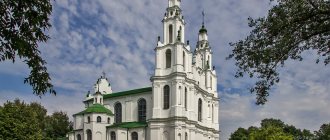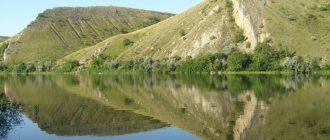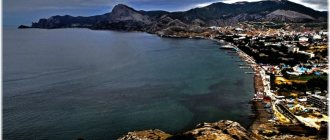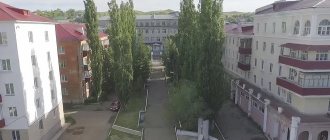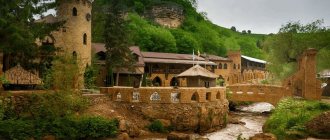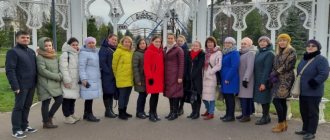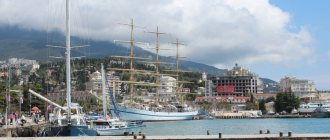Maloyaroslavets is a small town in the Kaluga region, which became the scene of bloody battles of two Patriotic Wars: 1812 and 1941-1945. It bears the title “City of Military Glory”.
The settlement was founded by Prince Vladimir Serpukhovsky, who earned the nickname Brave for his military exploits. The city was named after Yaroslav, the prince’s newborn son.
Maloyaroslavets is permeated with the memory of historical battles:
- In 1812, the Battle of Maloyaroslavets became a turning point in the war with Napoleon. The French were not allowed into the rich southern regions of the country and were forced to return along the devastated Smolensk road;
- in 1941, the attack on Moscow was delayed at the Ilyinsky lines.
The Ugra River, caves and waterfalls, museums and estates - what not to miss when traveling around the Kaluga region?
Maloyaroslavets: the best things to see in 1 day
By and large, the whole of Maloyaroslavets can be seen in 1, 2 or maximum 3 days, but we still highlighted its attractions, which are considered the main calling cards that are definitely worth a visit.
Sennaya Square and the Monument of Glory
- Address: pl. Sennaya.
The main square of the city, where you should go first when arriving in Maloyaroslavets. Its historical name reflects its original purpose - previously they traded here in hay, firewood and other goods that provided for the lives of city residents in the era of traditional farming. Over time, it became a cultural and administrative center, the center of urban life.
After the war with Napoleon, in which Maloyaroslavets played an important role, it was decided to install a memorial stele in its central square in memory of the heroes. The corresponding order was given by Emperor Nicholas I in 1844.
The choice of the monumental landmark project was carried out on a competitive basis. The Italian sculptor A. Adani won. The stele itself was made at the Alexander Foundry in St. Petersburg. During Soviet times, the monument was dismantled. The authorities declared it “not of historical significance.” It was restored again using public funds in 2010.
mound of Glory
- Address: corner of Lenin and Gagarin streets.
Fierce battles near Maloyaroslavets also took place during the Great Patriotic War; the area was of great strategic importance for the defense of Moscow - the Mozhaisk defense line passed here. In 1975, a small provincial town in Russia acquired a monument that received the same name as the legendary monuments in the hero cities of Volgograd and Kyiv.
The Maloyaroslavl “Motherland”, created by Lev Kerbel and Evgeny Kireev, became located on the site of the mass graves of fallen soldiers. Nearby there is a memorial dedicated to the Maloyaroslavl residents who became heroes of the Second World War. Objects located near the square named after Marshal G.K. Zhukov, form a single memorial complex.
Maloyaroslavets Military History Museum of 1812
- Address: Moskovskaya, 23.
The war with Napoleon became the main theme of one of the most famous city museums in Maloyaroslavets. The initiator of the creation was the school history teacher Alexander Dmitriev, who also happened to become the first director of the institution. Opened in 1939, the museum was initially a branch of the Borodino museum complex, and later became an independent organization.
In addition to exhibits telling about the battle of Maloyaroslavets and the war with Napoleon, the museum halls house an exhibition on the peaceful history and everyday culture of the city, as well as the “Children of Mars” exhibition. The latter arouses great interest among young visitors. Here you can learn about the history of the development of military art in various periods of world history.
Monument to Prince Vladimir the Brave
- Address: Plekhanov, 4.
The founder of the city of Maloyaroslavets is the appanage ruler of ancient Rus', the grandson of Ivan Kalita and participant in the Battle of Kulikovo, Prince Vladimir Andreevich. He went down in history under the nickname “Brave”, which he received after the battle with Mamai in 1380.
He laid the foundation of the settlement and named it in honor of his son Yaroslav. The toponym Maloyaroslavets appeared to avoid confusion with the already existing city, bearing the name of Grand Duke Yaroslav the Wise.
The sculptural embodiment of the founding prince appeared in 2002 - on the occasion of the 600th anniversary of the city. The warlike figure of the prince with a sword in his hands is the work of the sculptor A. Artimovich. The monument emphasizes the courage and heroism of the historical figure.
Nikolsky Chernoostrovsky Convent
- Address: Kutuzova, 1.
The active convent is the main religious monument in Maloyaroslavets. The beginning of its history goes back to the construction of the St. Nicholas Church in the 14th century. The monastery was built by the Obolensky princes. There is debate about whether they can be called the founders of the shrine. It is believed that it appeared on the site of the temple only two centuries later - in the 16th century.
The monastery was located on the top of the Black Ostrog mountain, among impenetrable dense forests. This fact is associated with the name of the monastery Nikolsky - in honor of the church, Chernoostrozhny, and later Chernoostrovsky - after the location. The monastery experienced many shocks, suffered during the Time of Troubles and was partially destroyed during the war with Napoleon. The religious history of this interesting place was interrupted during the Soviet period; museums and educational institutions were located here.
With the collapse of the USSR, the monastery was transferred to the jurisdiction of the Kaluga diocese, and nuns settled here again. The monastery is famous for its good deeds. He runs an orphanage for girls. Its territory is landscaped and beautifully decorated. The nuns here are engaged in landscape design.
The most interesting museums in Maloyaroslavets
Maloyaroslavets is a fairly ancient settlement, dating back to the 14th century. It is repeatedly mentioned in the school history course, and its sights preserve the memory of two Patriotic wars - the war with Napoleon in 1812 and the Great Patriotic War of 1941-1945. The city's many museums can best tell the story.
Museum-diorama “Battle of Maloyaroslavets”
- Address: Moskovskaya, 13.
A diorama is a large-scale painting made in the shape of a semicircle. Museum exhibitions of this type recreate historical events and outstanding battles. A similar object in Maloyaroslavets is dedicated to the Battle of the Patriotic War of 1812. The diorama is considered part of the Military History Museum. It is located in a separate building - in the building of a former chapel. Before the 1917 revolution it had a religious function.
The author of the 20-meter canvas was the famous Soviet battle painter Efim Deshalyt. Here there is an immersion in the history of more than 200 years ago, an “effect of involvement” is created, visitors seem to find themselves on the battlefields of Maloyaroslavets. The exhibition is accompanied by military music, which further enhances the impression.
Memorial complex "Ilyinskie Borders"
- Address: s. Ilyinskoe.
A memorial museum in the village of Ilinskoye, in the vicinity of Maloyaroslavets, is dedicated to the memory of the heroes who held back the advance of German troops on Moscow in 1941. Here you can see the remains of pillboxes and artillery pieces from the Great Patriotic War. The Eternal Flame burns on the territory of the complex, the flame is installed at the foot of the monument to Podolsk cadets by Yu. Rychkov.
Part of the museum exhibition, which also reflects other important episodes of the war - the counter-offensive of the Soviet army near Moscow and the battles for Maloyaroslavets in 1942, will tell about the heroic feat of the cadets. One of the sections of the exhibition is called “People's Memory”. The opening of the museum and memorial complex took place on the eve of the 30th anniversary of the Great Victory - May 8, 1975.
Museum of History and Local Lore
- Address: Lenin Square, 17.
The relatively young Maloyaroslavets Museum opened its doors to visitors in 2000. Its exhibits take guests to various periods in the history of the city and its surroundings from ancient times to today. Household items, archaeological finds, and coin collections are presented here. An important place is occupied by artistic values and works of art:
- paintings,
- objects of decorative and applied art,
- rare books, etc.
Much attention is paid to military history. An addition to the main exhibition of the museum was an open-air exhibition of military equipment, which appeared near the museum two years after its opening. Cannons and anti-aircraft guns, mortars and infantry fighting vehicles are on display here.
Museum and Exhibition Center named after Soldatenkov
- Address: st. Russian Gazovikov, 13.
Igor Soldatenkov is a Maloyaroslavl artist, an honorary citizen of the city. He took an active part in the formation of the art museum, which appeared in 1998, and donated many exhibits, including:
- paintings and icons,
- engravings and folk costumes,
- works of decorative and applied art.
In 2009, the famous person passed away. The exhibition center was named after him. In addition to the permanent exhibition, temporary exhibitions are held here, works from the collections of various famous museums in the country, including Moscow and St. Petersburg, are displayed.
Art Gallery
- Address: Russian Gazovikov, 13.
Since 1992, works by contemporary masters of the Kaluga region have been exhibited in Maloyaroslavets in the art gallery of Elizaveta Chernyavskaya, an outstanding local artist, whose paintings form a significant part of the exhibition. One of the halls is completely dedicated to her work. Since 2016, the gallery has become a branch of the Soldatenkov Center. On the basis of the institution, work is carried out with younger generations, exhibitions of children's works are held.
Reconstruction of the battle of 1812
Among the very specific attractions, you cannot ignore the annual reconstruction of the battle of 1812, which takes place in late October. With the direct participation of the museum dedicated to the Patriotic War, every year residents and guests of Maloyaroslavets take part in costume performances, recreating scenes of armed battles of the nineteenth century.
And lovers of more modern and fashionable hobbies can take part in the annual gathering of bikers from all over Rus', which is called “Motoyaroslavets” in the city and takes place on the last weekend of the first summer month.
Beautiful Maloyaroslavets architecture
The history of Maloyaroslavets can be traced not only in museums, but also in other attractions, for example, in the architectural appearance of the city and its immediate surroundings.
Historical and archaeological monument “Fortification of the Vyatichi”
- Address: Nizhneproletarskaya street.
Ancient settlements on the territory of the city are evidenced by a historical and archaeological site located in the historical part of Maloyaroslavets - on the coast of the Luzha River. We are talking about the remains of a settlement of the Slavic tribe of Vyatichi.
According to scientists, it was inhabited in the 7th-12th centuries, sometimes the dating is extended to the 15th century. The settlement was fortified with defensive structures - a fortress, an earthen rampart and a moat. They were erected by Russian princes for the purpose of protection from enemy attacks. Three burial caves have been preserved on the territory of the settlement.
The archaeological excavations carried out here provide evidence of the high level of material culture of the settlers. Archaeologists were able to discover fragments of dwellings, household items and handicrafts.
Mansurovo Estate
- Address: Dubrovka village, Maloyaroslavetsky district.
The noble estate on the outskirts of the city of Maloyaroslavets was built at the beginning of the 17th century by I.D. Mansurov, then passed on to his descendants. Further, the estate was owned by other noble families. The last owner of the estate was Ilya Lvovich Tolstoy, the son of the great writer, author of the epic “War and Peace”.
But this is not the only fact connecting the estate with the history of Russian literature. It is known that in the 19th century the settlement around the estate was called the village of Dubrovka; it was reflected in the works of A.S. Pushkin. Conceiving one of the famous novels, the classic wanted to give the main character the surname Ostrovsky, but, having been here, he “renamed” him. This is how Dubrovsky appeared.
The estate complex consists of a manor house, two outbuildings, a front yard and a park. At the moment, the objects require restoration. There is information that it is planned to create a museum on the basis of the estate, which can be viewed both independently and on excursions.
The building of the first girls' gymnasium
- Address: pl. Marshala Zhukova, 1.
The first private educational institution for girls opened in Maloyaroslavets in 1880. At the same time, a building was built for it in the historical part of the city; throughout its history it performed an educational function.
Initially, the women's educational institution had only two classes, then the gymnasium became a six-class school and turned from private to public. After the Great October Socialist Revolution it became a simple secondary school.
In June 1941, yesterday's schoolchildren who were sitting at their desks here went to the fronts of the Second World War; many did not return. In their honor, a memorial plaque “Dead Alumni” was installed on the building. Now the premises of the former gymnasium and school are occupied by the Center for Extracurricular Activities.
Postal station building
- Address: pl. Lenina, 4.
The postal station is an architectural monument of the city of Maloyaroslavets. Erected in the 40s of the last century, the building has retained its original appearance to this day. The building with lancet windows was a typical provincial town station building of that time.
Thanks to a coincidence, the great writer N.V. once made an emergency stop at this station. Gogol. He stayed here for only one day, but this fact remained in history and was immortalized on a memorial plaque installed on the façade of the landmark.
Village Radishchevo
After that, we got into a car and drove to the village of Radishchevo (formerly Nemtsovo). It is located at the exit from Maloyaroslavets towards Medyn. A. N. Radishchev lived here in childhood and after exile. Now nothing remains of the estate; in its place there is only a memorial sign. Yes, the Karizhka River, more like a stream, flows among the willow trees.
This completed our Maloyaroslavets inspection program, and we headed home.
Promotional code from Travelata When purchasing a tour on Travelata, a discount of 300 rubles. for tours from 20,000 rubles. — using promotional code AF300putevye - 500 rubles discount. for tours from 40,000 rubles. - using promo code AF500putevye
Temples of Maloyaroslavets: the most beautiful churches
Russian cities are rich not only in historical and everyday architecture. There are several beautiful churches in Maloyaroslavets that are worth visiting.
Cathedral of the Kazan Icon of the Mother of God
- Address: Kaluzhskaya, 1.
Built in the 1740s with funds allocated by the grandfather of the famous writer and publicist Alexander Nikolaevich Radishchev, Afanasy Prokopyevich. After his death, he was buried here - in the southern aisle of the church.
The cathedral is a brick plastered single-domed church with a bell tower in the Baroque style. The high azure dome and bell tower make it visible from afar. During the atheistic period, there was first a peasant’s house, and then a cinema. In the 2000s. the church was restored to its original form and returned to the believers.
Cathedral of the Assumption of the Blessed Virgin Mary
- Address: Lenina, 20.
Maloyaroslavets Assumption Cathedral stands on the central square of the city on the site where the temple was located back in the 15th century. It burned and was rebuilt several times, and acquired the appearance it has today in 1912. The church was built according to the design of the provincial architect A.D. Sklovsky in honor of the centenary of the Patriotic War of 1812.
In 1929 it was closed, but not destroyed, although during the years of Soviet power it fell into disrepair. In the 1990s, the cathedral was again handed over to believers, and restoration work was carried out. Now it is one of the most beautiful buildings in the city center and an important landmark against which you can take photographs.
Church of the Nativity of John the Baptist
- Address: Ivanovskaya street.
A small, townsman-type church, the architecture of which combines elements of classicism and ancient Russian architecture. Built on the site of a wooden church in 1772 by Moscow merchant Terenty Tselibeev. During the hostilities of 1812, the temple was damaged - the bells were broken and the floors were damaged. But everything was quickly restored, and services began here again in November 1812. In 1937 the church was closed. In 2000, it was returned to the Russian Orthodox Church. The building has been given the status of a historical and cultural monument.
Church of St. Michael the Archangel
- Address: Kutuzova, 3.
The new church at the entrance to the Black Island Monastery was built in 2012 and consecrated by Patriarch Kirill. The single-domed small church is stylized to resemble the architecture typical of Rus' in the pre-Mongol period.
Chapel of the Transfiguration
- Address: Proletarskaya street.
The wooden church-chapel was built in 2007-2008. on the site where the Church of the Transfiguration of the Savior, which burned down in the fires of the Patriotic War, stood, which traced its history back to the beginning of the 17th century. The architect of the modern architectural monument is Boris Mikhailovich Vinnikov.
Temples[edit]
Assumption Church
Assumption Church[edit]
In 1909, an all-Russian collection of donations was organized for the construction of a memorial church in the city of Maloyaroslavets in honor of the 100th anniversary of the battle. The required amount was collected, and by 1912, on the site of the old Assumption Church, which was badly damaged during the battle, a new, majestic one in the Byzantine style was erected.
The church is open on Sundays when there are services; the iconostasis has been preserved in it.
Opening hours: The church is open on Sundays when there are services.
Monuments and memorials in Maloyaroslavets
In the provincial town of the Kaluga region there are many monuments reminiscent of the past and the personalities who did a lot for its formation.
Monument to the heroes of the battle of 1812
- Address: Lenin Square.
The bloody battle with Napoleonic troops at Maloyaroslavets claimed many lives. The fallen were buried right on the battlefield - in mass graves. Two of the three mass graves in the city are located in the central part, where a square is laid out in memory of that war. For the centenary of the event, in 1912, a memorial was erected here.
The creation of the sculptor Vasily Russo is a stele in the form of a white rock, crowned with an Orthodox cross, in front of the rock is a sculptural image of a soldier in the uniform of that time, at the foot there are models of cannons and cannon yards. On October 12, city residents traditionally lay flowers at the monument to the “Heroes of the Battle of 1812.”
Bust of M.I. Kutuzova
- Address: 1812 Square.
In 1955, near the memorial “Heroes of the Battle,” a bust of the commander-in-chief of the Russian troops in the Patriotic War, Mikhail Illarionovich Kutuzov, appeared. The military leader is depicted in accordance with his usual appearance - with an eye patch. The installation of the monument by S. Gerasimenko was timed to coincide with the 240th anniversary of the birth of the great commander.
Monument to the regimental priest
- Address: pl. Lenin.
In the park next to the Cathedral of Our Lady of Kazan there is a monument to the hero of the Patriotic War of 1812, Knight of St. George, priest Vasily Vasilkovsky. Although his name is not on the monument, it was he who became the prototype of the generalized appearance of a priest who served on the battlefields. The work of sculptor Salavat Shcherbakov was installed in 2014 on the initiative of the Russian Military Historical Society.
Monument to G.K. Zhukov
- Address: pl. Zhukova.
One of the main squares of Maloyaroslavets is named after Marshal Georgy Konstantinovich Zhukov. Memorial sites dedicated to the Great Patriotic War are concentrated here. Zhukov commanded the defense of Moscow, in which Maloyaroslavets played an important role. The appearance of the square would not be complete without a monument to the military leader. A bust of Zhukov by A. Artimovich appeared in 2005.
Monument to the hero Savva Belyaev
- Address: Lenina, 32.
A resident of Maloyaroslavets, Savva Belyaev, was the secretary of the local zemstvo court before the war of 1812; he went down in history as a hero of the war with Napoleon. Savva flooded the dam across the river, which allowed our army to catch up with the French. He also provided active assistance to the wounded.
On the initiative of Major General A.Ya. Mirkovich, a bust of S. Belyaev was installed in the city in 1890, but this monument has not reached us; it was destroyed by the Bolsheviks after the revolution. In 1950, the monument was restored by a group of Kaluga sculptors; the copy has minor differences from the original.
Monuments to “Courageous Chasseurs” and “Courageous Grenadiers”
In 2002, two memorial signs appeared in the city in honor of the soldiers who fought for the city in 1812.
- Address: Lenin street.
The first - a monument to Courageous Rangers - settled at the intersection of Kaluzhskaya, Lenin and Belyaev streets.
- Address: 1812 Square.
The second is dedicated to the Courageous Grenadiers, located in the park named after 1812.
The obelisks are granite slabs with images of soldiers and the dates of the battle of Maloyaroslavets. Both objects were created by the architect A. Zamerov.
From the history
Maloyaroslavets was founded as a city at the end of the 14th century by the famous Vladimir Serpukhovsky, who commanded the ambush regiment that decided the case in the Battle of Kulikovo. It was first mentioned in 1402, and this year is considered the year of the founding of Maloyaroslavets. Although there is an ancient settlement of the Vyatichi Slavs located here, that is, people have settled in these places since ancient times.
The city is famous for the fact that during Napoleon’s retreat from Moscow in October 1812, a battle took place here, after which French troops continued their retreat to Smolensk. French historians believe that they won the battle because the city remained with the French troops. Ours are like Kutuzov, since the French had to retreat along the devastated Smolensk road. It is not entirely clear who is right, but it is certain that the French lost the war miserably, although, as they believe, they won all the most important battles. Well, Maloyaroslavets, which changed hands five times and was strewn with the bones of the dead, became a city of military glory.
Neighborhoods of Maloyaroslavets and natural places
In the vicinity of the town there are many interesting places that tourists visit both independently and with children.
Park "Dubki"
- Coordinates on the map: 55.026282, 36.477197.
This favorite place for walking has recreational and ecological significance. Located in the northern part of the city. The park got its name thanks to the oak trees growing here. It is considered a specially protected natural area.
Reserve "Bunina Mountain"
- GPS coordinates: 55.060556, 36.466667.
Along the banks of the Luzha there is a forest stretching for two kilometers, which has the status of a nature reserve. It is called “Bunina Mountain”. Among the mixed forests with rich vegetation, there is a natural spring called the “Thundering Spring”. The object attracts the attention of tourists and local residents. The memory of the War of 1812 makes itself felt here too - in the primeval forests you can find military fortifications of both our troops and the French.
Read about the sights of other cities of the Kaluga region: Medyn, Borovsk, Kaluga, Tarusa and Kozelsk
Maloyaroslavets is a small town that deservedly bears the title of city of military glory. Many pages of its history are connected with military events of different centuries. Anyone interested in the past of our Motherland should definitely visit here.
General description[edit]
Objectively
The regional center of the Kaluga region is 61 km north of Kaluga and 124 km south of Moscow. On the river Puddle. Population – 28 thousand people.
Subjectively
If you first go to the Nikolaev Chernoostrovsky monastery and encounter a flock of kids who are heading to the temple with angelic singing, you become joyful for these orphans, whom God himself warms with the hands of good nuns and feeds with the money of the monastery’s benefactors, and for us that we live in a time when mercy is allowed. Monuments of 1812 also awaken good and patriotic feelings in the viewer.
1812 is the year of both death and rebirth of the city. Everything interesting here is connected with the battle of 1812. And the graves, monuments, temples, and many sights of Maloyaroslavets remind of this.
The views from the high hills on which the city is located to the river valley will also be remembered for a long time. Puddles.
